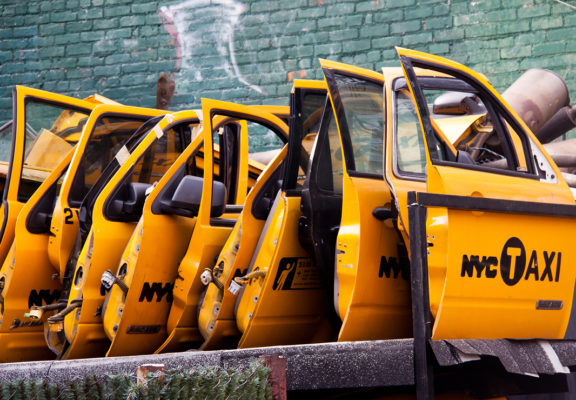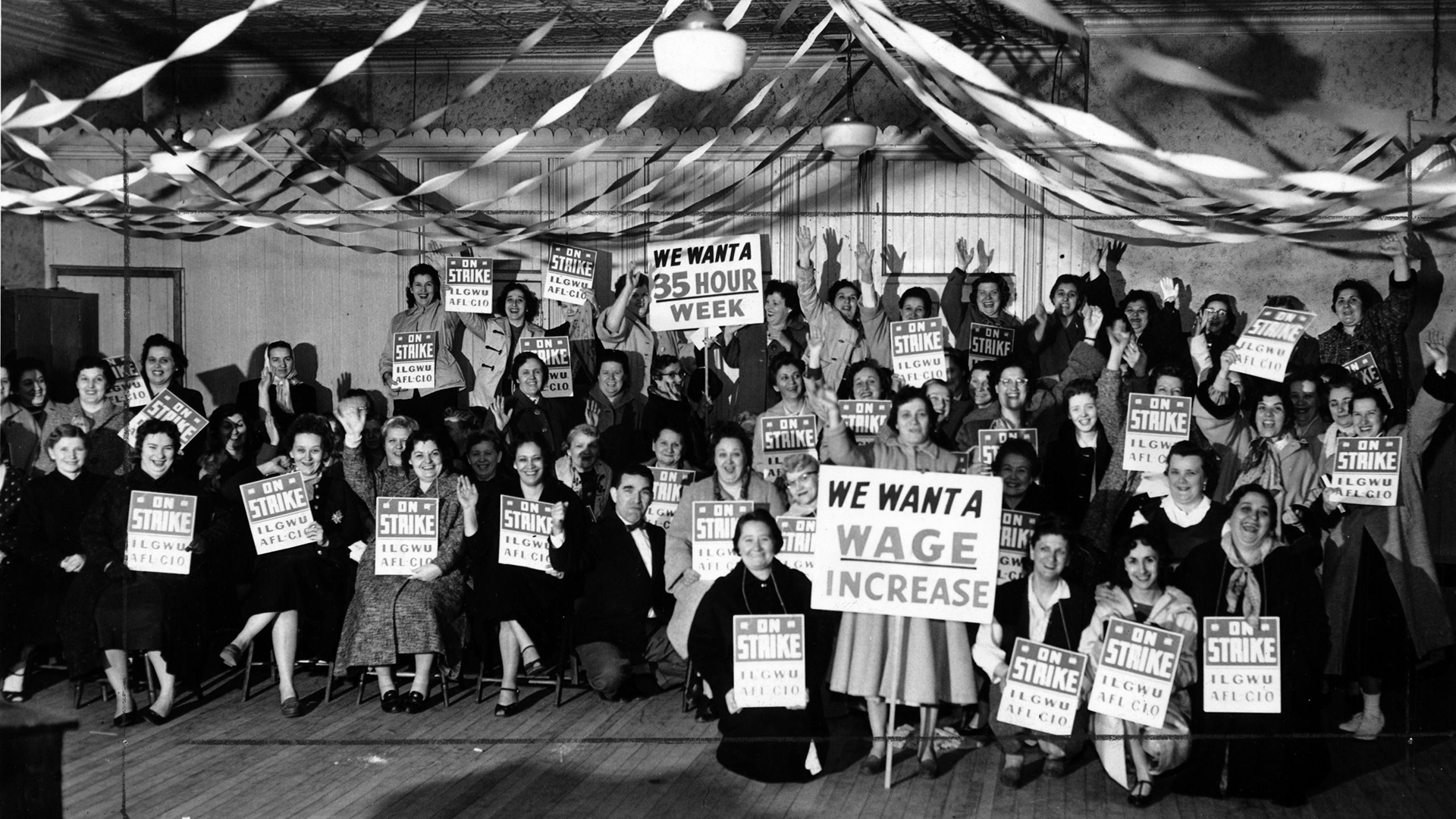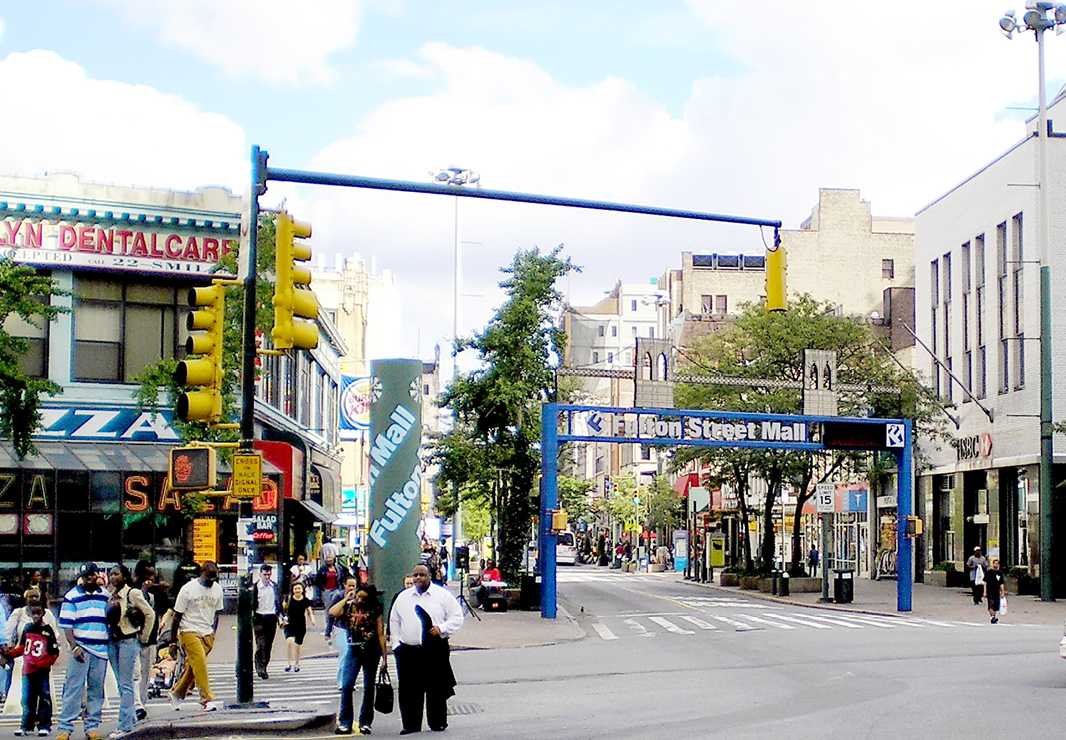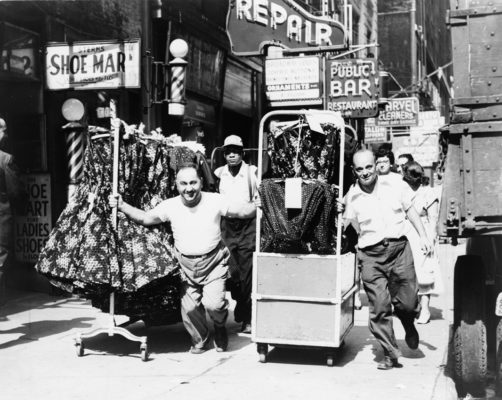
Building an equitable economy in New York City requires a groundbreaking approach to urban design.
New York City lays claim to our nation’s largest economy and a record low unemployment rate. Yet stagnating wages, skyrocketing rents and growth in the gig economy have made the city increasingly inaccessible to the urban workforce.
Even worse, the federal government is reducing investment in human capital – from education and low-income housing, health and human services, and essential infrastructure – threatening upward mobility across the boroughs.

Photo: Wikimedia Commons
To confront the affordability crisis, the de Blasio administration has pledged to create 100,000 good-paying jobs through capital investment and land use tools. But how can we balance the need for new commercial development with much-needed housing? Is it time to transform our central business district, revamp our outer borough downtowns, and adapt our industrial zones? Where could we invest in public space and upgrade infrastructure?
And how will advances in technology impact the urban landscape? Automation may threaten nearly a tenth of the city’s current jobs. E-commerce is transforming the city’s retail corridors and freight networks. Co-working and the sharing economy have opened new neighborhoods to small businesses. Will we be able to harness technology to shape a more dynamic and equitable city?
The Forum invites you to advance designs, policy initiatives and creative financing ideas focused on the evolving economy. We are looking for proposals that explore the question:
How can we use creative zoning, investment in the public realm, and new infrastructure to enhance economic outcomes for all?

Photo: Kheel Center
We welcome design, policy, and creative financing proposals pertaining to the below sites of opportunity:
- Central Business Districts
- New Working Neighborhoods
- Cultural & Nightlife Districts
- Industrial Business Zones
- Commercial Corridors & BIDs
- Mobility Networks
- Open Space
The most compelling ideas will form the basis of the Urban Design Forum’s Work Force program, a series of presentations, tours, and roundtables debates with key city leaders hosted monthly from June 2018 to April 2019. Successful proposals will also be included in a 2019 publication, distributed to key civic leaders and a broad public throughout the region.
We are looking for bold ideas with real world applicability. We welcome napkin sketches, policy proposals, detailed designs, essays, videos, etc. Ideas may apply to sites in the City of New York or the greater New York area. Examples from other cities that can be applied to New York City are also welcome. There is no limit to the number of ideas you may submit, but each must be submitted individually.

Photo: Wikimedia Commons
Key Questions to Consider ↓
Participants are invited to expand upon questions like:
- Is our zoning working? Should new uses be mixed to improve economic development across the five boroughs?
- How can central business districts be adapted to embrace emerging industries, like technology, life sciences, and healthcare?
- How can increasing demand for residential construction be balanced with clever commercial development?
- How has co-working reshaped New York’s residential and commercial districts?
- How will e-commerce impact the retail landscape and urban life? How should the city address lingering vacancies, substandard wages, and fleeting local businesses?
- How will automation impact the urban workforce and long-standing commercial districts?
- How is the sharing economy impacting the urban workforce and the built environment?
- How can emerging working neighborhoods be connected through new mobility networks?

Photo: Wikimedia Commons, New York World-Telegram and the Sun staff photographer
Schedule ↓
Friday, February 2
Call for ideas launch
Friday, March 16, 5:00pm
Registration deadline
Friday, March 30, 5:00pm
Full submissions due
June 2018 – April 2019
Work Force public programs
Fall 2019
Work Force publication release
Submission Materials ↓
Submission Information
Name of the idea, submitter name (individual, team or company), key contact (name, email and phone).
Summary
A summary of your proposal (please limit to 100 words, although if more is needed, there is a 500 word max).
Headline Image (if applicable)
One 12”x12” image, chart, or diagram summarizing the idea in high-resolution .jpg format, printable at 300dpi.
Supporting Images (if applicable)
Up to 5 supporting images, charts, and diagrams in high-resolution .jpg format, printable at 300dpi. Suggested minimum size 12”x18”.
Biography
A 50-word max biography of the individual, or a 50-word max description of the team or company.
Registration ↓
Please submit a brief synopsis (100-word max) of your proposal to Stephen Martin, Program Director, stephen@urbandesignforum.org by
March 16, 5:00pm.
Full submissions due March 30 at 5:00pm.
Please direct all questions to:
Stephen Martin
Program Director
stephen@urbandesignforum.org
(718) 663-8478
Reading List ↓
- “2016 NYC Tech Ecosystem,” New York: HR&A, Association for a Better New York, and Partnership for New York City, October 2017.
- Chaban, Matt A.V. “Work to Do: How Automation Will Transform Jobs in NYC,” New York: Center for an Urban Future, 2018.
- Dupuis, Nicole et al. “The Future of Equity in Cities,” National League of Cities, 2017.
- “Employment Patterns in New York City: Trends in a Growing Economy,” New York: New York City Department of City Planning, 2016.
- “Fourth Regional Plan: Making the Region Work for All of Us,” New York: Regional Plan Association, November 2017.
- González-Rivera, Christian. “State of the Chains, 2017” New York: Center for an Urban Future, 2017.
- Gutman, Jeffrey et al. “Delivering Inclusive Access: A Framework to Guide Researchers, Policymakers, and Practitioners Working in Urban Transport,” Brookings Institution, August 2017.
- “How is Economic Opportunity Threatened in Your Neighborhood?” New York: Association for Neighborhood Housing and Development, November 2016.
- Mandel, Michael. “How Ecommerce Creates Jobs and Reduces Income Inequality,” Progressive Policy Institute, September 2017.
- Manyika, James et al. “A Future that Works: Automation, Employment, and Productivity,” McKinsey Global Institute, January 2017.
- Messina, Judith. Making the Connection: Aligning NYC’s Small Businesses and the Workforce Development System, New York: Center for an Urban Future, 2017.
- “New York Works: Creating Good Jobs,” New York: The City of New York, 2017.
- “New York’s Innovation Economy,” New York: Partnership for New York City with Doblin and Deloitte, 2016.
- “OneNYC 2017 Progress Report. New York: City of New York Office of the Mayor, April 2017.
- “Planning for Retail Diversity: Supporting NYC’s Neighborhood Businesses,” New York: New York City Council, 2017.
- Sargent, Kate. “Coworking: A Corporate Real Estate Perspective,” HOK, 2017.
- Tsay, Shin-pei et al. “Private Mobility, Public Interest,” New York: Transit Center, September 2016.